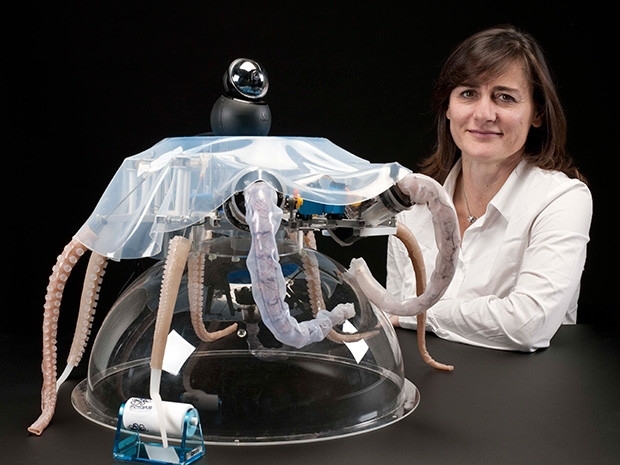
Lei Feng network press: This article source Robohub, by Lei Feng network (search "Lei Feng network" public concern) exclusive compilation, refused to reprint without permission!
Last week, Lei Feng.com reported an octopus robot. Its unique appearance left a deep impression on many people and pointed the way for the research of robots. With the advancement of technology, software robot research has entered a more micro-domain - Caterpillar robots.
Scientists have been studying the caterpillar robot for some time. Its special shape makes it superhuman speed and flexibility, it can creep in very difficult space, and can change the direction of travel very quickly. It can be used to carry out Rescue and internal collection work to create convenience for humans.
Recently, the research team of the School of Physics of the University of Warsaw in Poland used liquid crystal elastomer technology (which was originally developed by the LENS Institute in Florence) to create a 15-mm-long bionic micro-soft robot that can imitate the gait of caterpillars. It is worth mentioning that this robot can absorb energy from green light and is controlled by laser rays. In addition to crawling on the plane, it can climb over small slopes, squeeze over gaps, and transport things.
Over the past few decades, scientists and engineers have been working hard to create robots that mimic natural biology. However, most of these robots have hard bones and joints and are driven by electricity or pneumatic actuators. However, many organisms in nature are mollusks (such as crickets, snails, insect larvae, etc.) that can freely use different strategies to survive in a complex environment. So far, research on software robots still faces many limitations. Most of the robots that are built are also bulky (usually a few tens of centimeters). This is mainly due to difficulties in energy management and remote control.

Liquid crystal elastomer (LCE) is a smart material that can change shape under the irradiation of visible light. After combining the newly developed technology, it can turn these flexible materials into any three-dimensional shape with preset driving performance. This light-driven deformation will enable a monolithic LCE structure to perform complex motion operations without the need for many discrete actuators.
Now, researchers from the University of Warsaw have collaborated with the Italian LESN Institute and researchers at the University of Cambridge in the United Kingdom to develop a software-based caterpillar robot that uses a photodynamic liquid crystal elastomer monolithic integrated circuit design. The body of the robot consists of light-sensitive elastomer stripes. By controlling the deformation mode, the robot can imitate the gaits of different animals. At the same time, it can also climb over small slopes, squeeze over gaps, and push objects that are 10 times the weight of their bodies, which indicates that it can complete tasks in challenging environments and can point the way for future potential applications.
Professor Piotr Wasylczyk, professor of physical photonic nanostructures at Warsaw University and director of the project, said:
Designing software robots requires new mechanics models, energy supply and control systems. Nature is the power that guides us. In the beginning, we learned from nature and changed our design method according to the way of natural evolution.
The researchers hope that this new type of material, manufacturing technology and design strategy will open a new door for micro-software robots, allowing more scientists to create more micro- and millimeter-scale robots, and let these robots have more skills, such as swimming (surface Or underwater) and even flying.
Via: Robohub
